Thanks to Tim Luard and Alison McEwan for sending in this wonderful panorama of Hong Kong:
Squinting at this thin gray strip, you're probably wondering what's so wonderful about it! Let's take a closer look at six sections, and all will become clear:
From left to right we have:
Where: This first section shows houses on the Peak. The one at the bottom-right corner was bought by the Bishop of Victoria in 1899, and given the name Bishop's Lodge [1]. Today it is accessible from Lugard Road, but of course that road hadn't been built when this photo was taken. Instead you'd walk down to it along the path from the umbrella seat.
The photographer looks to be almost as high up as Bishop's lodge, but over on the opposite slope. Would he be standing near where the Lions Pavilion stands today?
Here's the next section:
What: We've taken the road down from the Peak (today's "Old Peak Road"), and reached the first houses in mid-levels. This one was called Luginsland [2].
Continuing down the road we reach a crossroads. Robinson Road is on our left and right, and Albany Road is dead ahead:
The long roof in the bottom left corner belongs to The Albany [3]. That's Robinson Road on its left, and the road above it is Albany Road. Top-centre we can see the Roman Catholic Cathedral [4] in the distance.
(The photo is sharp enough that there are many more buildings we can identify. I'll link to a high-resolution copy of the photo below, annotated so we'll all know which buildings we're talking about.)
When: The next two sections show buildings on the newly reclaimed land. They'll help us pin down the date for when the photo was taken.
At the top is Queen's Building [5]. That was finished in 1899, and gives us the earliest possible date for the photo.
In front of it, Princes Building [6] is under construction. It was built in phases, and the PWD report for 1901 [7] says that the "Princes Buildings (south-western section)" was under construction.
In this photo, construction of the eastern side of the building is still underway and the western half remains unbuilt, so I'll guess the the photo was taken in 1900, mid-way between those two dates.
Across Statue Square we see the cricket pitch, and four more new buildings beyond. Those four buildings were all finished in 1897 and 1898, but there's still a space for a fifth building, the Hong Kong Club Annexe [8]. That was also listed as under construction in 1901.
The last section shows a site being prepared for a large building that still stands today. Do you recognise it?
The roads might help - the curving road below the site is Bowen Road, and the road running downhill to the left is Borrett Road. The British Military Hospital [9] will open on this site in 1907.
Who: Here's Tim to tell us more about the panorama and its original owner:
"I've just had it scanned from the original print, which extends over several pages in an album. Because of the shape it's hard to see much unless you enlarge it, of course, but we were surprised at how much detail there is when you zoom in.
The album was left by my late grandfather, Colonel Trant Luard. He was a gunnery officer in the Royal Marines with the China Fleet from 1901-4, so the album also has various postcards of Chinese scenes he bought during a visit to Peking just after the raising of the siege of the legations after the Boxer rebellion.
It seems from his letters he had a good time in HK anyway when his ship, HMS Blenheim, put in there -- dining at the Club, playing golf at Happy Valley and shooting in the NT."
If you can help us identify more of the buildings in the photo, there is an annotated, full-size copy at http://gwulo.com/atom/25321
Thanks again to Tim and Alison for sharing this photo with us. If you have any old photos of Hong Kong you'd like to share on Gwulo, please contact me. (Or even better, upload the photos straight to Gwulo for us to see. Here's how: http://gwulo.com/node/2076)
Regards, David
PS We're off on our summer holidays tomorrow, visiting family & friends, and escaping the summer heat for a few weeks. I'll check in to the site each day, and I've got the next few newsletters written and ready to post, but otherwise I won't be posting much while we're away. Enjoy yourself if you're taking a break over the summer, and safe travels if you're heading overseas.
|
Also on Gwulo.com this week:
|
References:


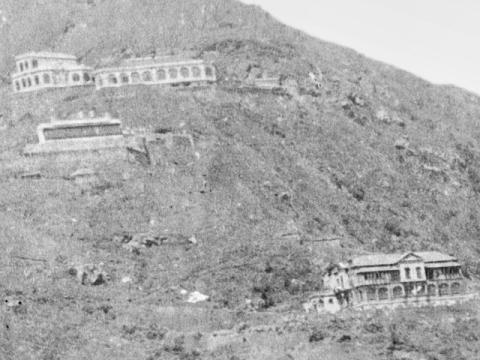
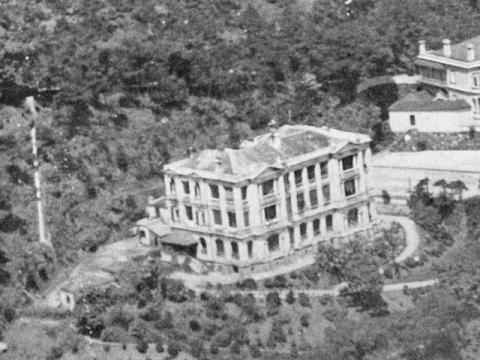

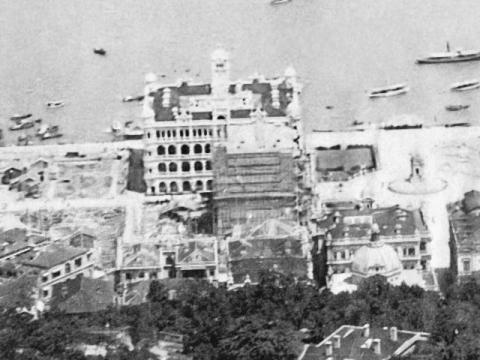
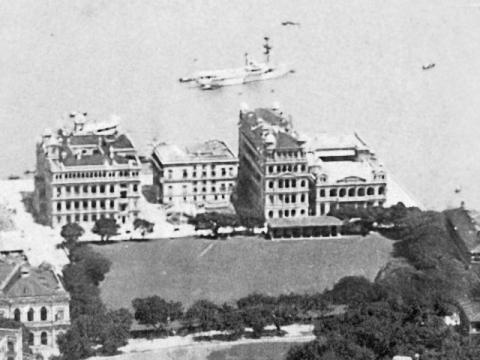
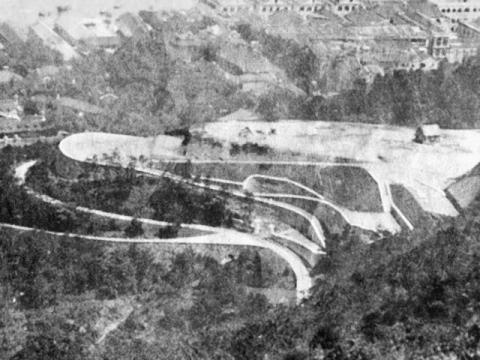
Comments
My question now becomes ...
Hi David,
I was amazed when I first saw the fine details of this c.1900 panorama photo in full screen mode (https://gwulo.com/media/25321). Surprised by the
superb details of the buildings it contains (*) over a panoramic area of Hong Kong Island of 120 years ago.
My initial question is how these panorama photos were taken, long before we have digital camera with panorama functions.
And google appears to give some answers even in the first page 🔍 results. I try to illustrate it with below output, pictorally :
google search command
Even as a history outsider, this appears a panorama photo with extraordinary quality from that era.
I am an amateur 'scanner' of photos/films and service provider. So I am quite aware of the few factors that may affect the final scan result and some limitations inherent.
We have recent chance to see your latest efforts in restoring the 1909 panorama photo of Hong Kong Island. Thank you for your kind sharing of the firsthand experiences (in youtube)
how to unfold and preserve such old but delicate photos, before actual scanning.
To reach current image size, I try to guess a 3200 dpi may have been used for scanning (while 6400 may make it no better).
My question now becomes like below ... could you share :
i) approximate size of the original photo(s) of that "c.1900 panorama from the Peak", if you have the hardcopy or seen before ?
ii) dpi used for scanning, if any, to reach such clarity of image ? (or, dimension in pixels & resolution in dpi of the current image file)
From the clues you may share, hope we could learn something from these, not just as sidewalk audience.
e.g. if future photo/film scanning may improve in quality and possible limitations on the way.
Thanks a lot !
--------------------------------------------------------------
p.s. even from my brief experiences, I would guess and assume :
- this c.1900 image is not by manual repair on the buildings one-by-one
- even AI may not give more (but real) details in current state of art
(*) at near maximum zoom
re: My question now becomes ...
Appx size: This panorama and the 1909 panorama are typical of the time, and were made from several prints each appx 10x8" in size.
DPI for scanning: I usually scan at 2400 dpi, which already makes for a very large file. I then edit the image to see at what point increasing the dpi doesn't add any detail, and shrink the photo accordingly. Most photos I scan end up being stored at 1200, 1600, or 1800dpi. Not many need to be kept at 2400dpi, and I can't think of any recently where it has been worth scanning at > 2400dpi.
Glass negatives
It is certainly of interest which negatives were used for the prints. From the 1850s onwards, wet glass plates were used, replaced by dry glass plates in the 1880s (more here).
Full size plates had dimensions of 6½ × 8½ in. (216mm × 165mm), also half and quarter sizes were in use. David gave the dimensions of his prints as approximately 10"x8" which is only slightly larger than the glass negative (if a full plate was used what I assume). So the details on the photos result from the large area of the glass negative, but it is still fascinating regarding the (compared to today's) poor quality of the lenses.
A history of panorama photography can be found here.
Thanks for your sharing 🙏
Hi David,
Thank you for your answer and sharing your experiences. They do give us some good rule of thumb for actual scanning in practice.
As for films of recent decades, I have also tried the alternative to capture the films with a digital camera and backlight, instead of scanner. It actually gives different flavor and clarity, and much faster than robust scanner with high dpi. This method applies to both negatives and slides, and no need of expensive cameras. There are lot of details and discussions available on internet.
Wish you all a fruitful and healthy New Year ! ✨ 🎑
Best regards
wl
p.s. thanks to Klaus for sharing another possible source : glass plates as negatives (c. 1850s - 1920s). So this may be another source that may affect the quality of the resulting image.